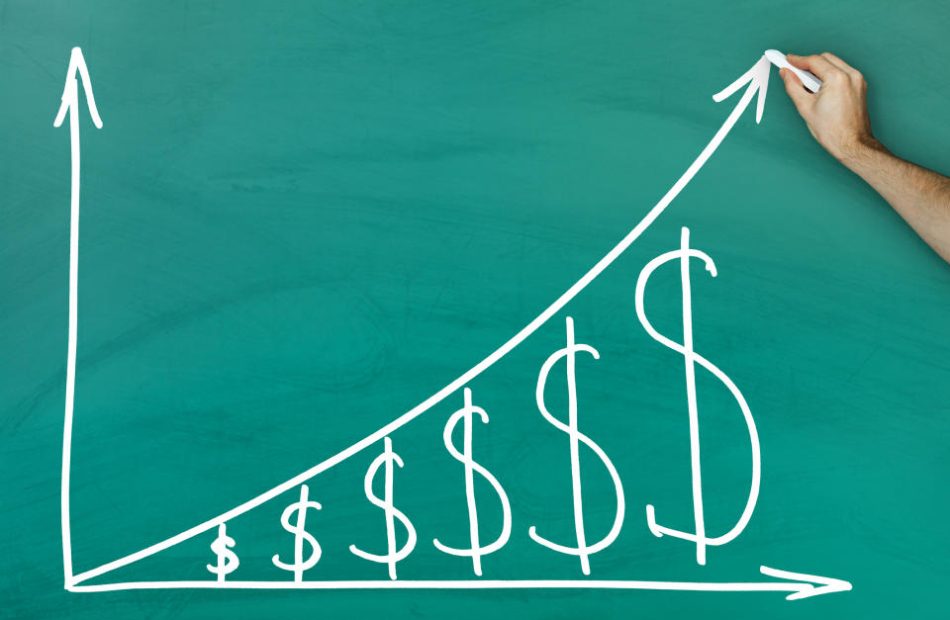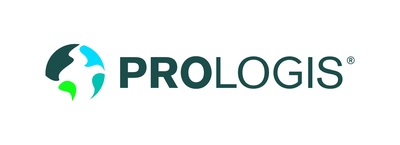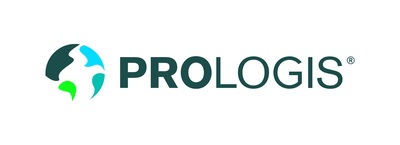2 Top Dividend Stocks I Plan to Buy Even More of This September
Dividend stocks are proven wealth builders. The average dividend stock has delivered above-average annual total returns over the long term, with the highest returns coming from companies that consistently increase their dividends. The average dividend grower has delivered a 10.2% annualized total return over the last five decades compared to 7.7% for the average member of the S&P 500, according to data from Hartford Funds and Ned Davis Research.
That data is driving me to load my portfolio with dividend growth stocks. I try to buy several each month to help build my wealth. Topping my list this September is Brookfield Renewable (NYSE: BEPC)(NYSE: BEP) and Rexford Industrial Realty (NYSE: REXR). Here’s why I plan to buy even more of these top dividend stocks this month.
A powerful income generator
Brookfield Renewable has done a stellar job increasing its dividend over the years. The leading global renewable energy producer has grown its payout at a 6% compound annual rate over the last 20 years. It has delivered at least 5% annual dividend increases for 13 straight years.
The company’s high yield, which currently sits around 5%, and its steadily growing dividend have helped give it the power to produce strong total returns. Over the last decade, Brookfield has generated a 10.8% average annual total return.
Brookfield Renewable should have ample power to continue increasing its dividend in the future. It expects to grow its funds from operations (FFO) by more than 10% annually through 2028. Several factors power that forecast. Brookfield expects organic growth drivers like inflation-linked contractual rate increases, margin enhancement activities, and its massive renewable energy project development pipeline to drive 7% to 12% annual FFO per share growth through 2028. Meanwhile, it anticipates accretive acquisitions pushing its growth rate above 10% annually. This forecast easily supports its plan to grow its dividend by 5% to 9% annually over the long term. Add its high yield to its high growth rate, and Brookfield Renewable could generate average annual total returns in the mid-teens from here.
Focusing on a prime location continues to pay big dividends
Rexford Industrial Realty has been a dividend growth juggernaut. The industrial REIT has increased its payout every year since coming public in 2013. It has delivered a blistering 18% compound annual dividend growth rate over the last five years, nearly double the 10% compound annual growth rate of its peers. That has helped drive a roughly 15% compound annual total return for its shareholders since it came public.
The REIT has grown briskly by focusing on the high-demand, supply constrained Southern California industrial market. Those market fundamentals keep occupancy rates high, which drives robust rent growth. Rexford Industrial Realty further capitalizes on that market by making accretive acquisitions.
Rexford Industrial Realty recently bought a high-quality portfolio of 48 properties from Blackstone in a $1 billion deal. Those properties come with embedded growth upside from future rental increases. That acquisition helped drive a 20.9% increase in the REIT’s net operating income in the second quarter and an 11.1% jump in its core FFO per share.
The company has lots of embedded growth ahead from that baseline. It sees a combination of repositioning and redevelopment projects, embedded annual contractual rental increases, mark-to-market rent growth as legacy leases expire, and recent investments growing its net operating income by 35% over the next three years. Meanwhile, future accretive acquisitions would further enhance its growth rate. With a fortress-like balance sheet, Rexford has ample liquidity to capitalize on accretive acquisition opportunities as they arise. Those visible growth catalysts should enable the REIT to continue increasing its dividend, which currently yields more than 3%.
Wealth-building dividend growth stocks
Brookfield Renewable and Rexford Industrial Realty have done fantastic jobs increasing their dividends over the years. That’s enabled them to grow value for shareholders by delivering strong total returns. They both have lots of visible growth ahead and should have no trouble increasing their payouts and generating strong total returns in the future. That’s why I plan to add to my positions in each one again this month.
Should you invest $1,000 in Brookfield Renewable right now?
Before you buy stock in Brookfield Renewable, consider this:
The Motley Fool Stock Advisor analyst team just identified what they believe are the 10 best stocks for investors to buy now… and Brookfield Renewable wasn’t one of them. The 10 stocks that made the cut could produce monster returns in the coming years.
Consider when Nvidia made this list on April 15, 2005… if you invested $1,000 at the time of our recommendation, you’d have $731,449!*
Stock Advisor provides investors with an easy-to-follow blueprint for success, including guidance on building a portfolio, regular updates from analysts, and two new stock picks each month. The Stock Advisor service has more than quadrupled the return of S&P 500 since 2002*.
*Stock Advisor returns as of September 3, 2024
Matt DiLallo has positions in Blackstone, Brookfield Renewable, Brookfield Renewable Partners, and Rexford Industrial Realty. The Motley Fool has positions in and recommends Blackstone, Brookfield Renewable, and Rexford Industrial Realty. The Motley Fool recommends Brookfield Renewable Partners. The Motley Fool has a disclosure policy.
2 Top Dividend Stocks I Plan to Buy Even More of This September was originally published by The Motley Fool
With Tellurian on the Verge of Disappearing, Here are 2 Alternative Ways to Cash in on the LNG Boom
Global demand for liquefied natural gas (LNG) could surge more than 50% by 2040, according to an estimate by Shell. Fueling that rosy outlook is the expectation that China will switch its power plants from coal to gas and that LNG will fuel the economic growth engines of South Asian countries.
Tellurian (NYSEMKT: TELL) had hoped to cash in on the global LNG boom by building its proposed Driftwood LNG facility. That had made it a popular LNG stock. However, with Tellurian agreeing to sell itself to Woodside Energy in a $1.2 billion cash deal, investors will need to look elsewhere to cash in on the LNG boom. Here are two alternatives to consider.
The U.S. LNG leader
Tellurian had hoped to build a leading pure-play LNG export company in the United States. Its proposed Driftwood LNG terminal could eventually export 27.6 million tonnes per annum (MTPA) once fully developed in 2028. The company estimated that the facility could produce over $3 billion in annual cash flow once it reached that point. Meanwhile, Tellurian owns enough land to build a second site capable of producing another 30 MTPA of LNG per year.
In a sense, Tellurian sought to replicate Cheniere Energy (NYSE: LNG). It became the first company to export LNG from the lower 48 states when its Sabine Pass terminal began commercial operations in 2016. Today, Cheniere operates two sites, Sabine Pass and Corpus Christi, with a combined capacity of 45 MTPA. The company has invested over $38 billion to build the country’s largest LNG producer and second biggest globally.
Cheniere Energy is on track to produce $3.1 billion to $3.5 billion of distributable free cash flow this year, something Tellurian wouldn’t have delivered for many years, if ever. The company is using the cash to invest in growing its LNG export capacity, repay debt, and return money to shareholders through repurchases and dividends. It recently authorized an additional $4 billion in share repurchases through 2027 and boosted its dividend payment by another 15%. It’s also building more LNG export trains at Corpus Christi and working on future expansion projects at both sites to continue growing its production capacity and cash flow.
Feeding gas to LNG facilities
LNG export terminals need a steady supply of natural gas. Because of that, they rely on pipeline companies to bring gas into their facilities. Few companies are in a better position to supply more gas to LNG export terminals along the U.S. Gulf Coast than Kinder Morgan (NYSE: KMI). It currently transports a little less than half of all the feed gas into U.S. LNG export terminals.
The company’s extensive pipeline network, particularly in Texas and Louisiana, puts it in a strong position to capture opportunities to supply more gas to LNG export facilities. The company currently has contracts to move 7 billion cubic feet per day (bcfd) of gas to LNG terminals. It sees that growing to 10 bcfd by the end of next year as more capacity comes online. Meanwhile, it’s pursuing 13 bcfd of additional opportunities to supply gas to LNG export facilities.
LNG exports are just one of Kinder Morgan’s many growth drivers. The company is also supplying more gas to support the country’s growing power demand and exports to Mexico. In addition, it’s investing to support the growth of lower carbon energy like renewable natural gas and renewable fuels.
Kinder Morgan currently produces about $5 billion in annual free cash flow. It pays about half that cash in dividends. It uses the rest to invest in high-return expansion projects, repurchase shares, and maintain its financial flexibility to make accretive acquisitions when opportunities arise. The company currently has $5.2 billion of growth capital projects in the backlog that provide visibility into its ability to grow its cash flow through 2028. That number should rise as it captures additional LNG-related expansion opportunities.
Cash in on the LNG boom right now
Tellurian offered investors the dream of potentially cashing in on the global LNG boom one day when it finished building its proposed Driftwood facility. Unfortunately, it couldn’t turn that dream into a reality.
However, while Tellurian couldn’t deliver on its LNG promise, Cheniere Energy and Kinder Morgan are already cashing in on the boom. They’re generating billions of dollars in cash flow from their LNG-related operations, which should continue growing in the future. That’s giving them more money to return to shareholders through repurchases and growing dividends. They’re great alternatives for those seeking to cash in on the growth ahead for LNG demand.
Should you invest $1,000 in Tellurian right now?
Before you buy stock in Tellurian, consider this:
The Motley Fool Stock Advisor analyst team just identified what they believe are the 10 best stocks for investors to buy now… and Tellurian wasn’t one of them. The 10 stocks that made the cut could produce monster returns in the coming years.
Consider when Nvidia made this list on April 15, 2005… if you invested $1,000 at the time of our recommendation, you’d have $731,449!*
Stock Advisor provides investors with an easy-to-follow blueprint for success, including guidance on building a portfolio, regular updates from analysts, and two new stock picks each month. The Stock Advisor service has more than quadrupled the return of S&P 500 since 2002*.
*Stock Advisor returns as of September 3, 2024
Matt DiLallo has positions in Kinder Morgan and Woodside Energy Group. The Motley Fool has positions in and recommends Cheniere Energy and Kinder Morgan. The Motley Fool has a disclosure policy.
With Tellurian on the Verge of Disappearing, Here are 2 Alternative Ways to Cash in on the LNG Boom was originally published by The Motley Fool
Dollar General Stock Crashes. Should Investors Buy the Dip or Stay Away?
Dollar General (NYSE: DG) shares lost nearly a third of their value after the discount retailer issued weak guidance with its fiscal Q2 results on Aug. 29. The plunge sent the stock to its lowest levels in more than five years.
Let’s examine the company’s earnings report and guidance and see if this is an opportunity to buy the shares on the dip, or if investors should stay away.
Lower-income consumers are under pressure
For its fiscal second quarter (ended Aug. 2), Dollar General saw its results fall short of expectations. Revenue rose 4% year over year to $10.2 billion, but its earnings per share (EPS) sank 20% to $1.70. That was below the analyst consensus of $10.4 billion in revenue and adjusted EPS of $1.79.
Same-store sales edged up 0.5% but were below the company’s expectations. The gains were driven by a 1% increase in traffic, although the average checkout ticket declined by 0.5%. Growth came entirely from the consumable category, as the seasonal home and apparel categories saw declines. Consumables are items that shoppers use up (and buy again) on a regular basis.
Gross margin decreased 112 basis points to 30%. The company said that shrink continued to remain a “significant” headwind, although it is making some progress reducing it. Shrink is the amount of merchandise that gets lost, damaged, spoiled, stolen, or just generally can’t be sold.
When looking at a struggling retailer, it is always good to look at inventory levels, as high inventories can lead to more markdowns and even more pressure down the line. On that front, the company’s merchandise inventory fell 7% to $7 billion and was down 11% on a per-store basis. Nonconsumable inventory decreased 13% and was 17% lower on a per-store basis.
Looking ahead, Dollar General lowered its full-year guidance. It now expects revenue to grow between 4.7% and 5.3%, with same-store sales increasing between 1% and 1.6%. That’s down from a prior outlook of revenue growth of 6% to 6.7% on comparable-store growth of 2% to 2.7%
Meanwhile, it lowered its full-year EPS forecast to a range of $5.50 to $6.20, down from previous guidance of between $6.80 and $7.55. It said that its gross margin will feel some pressure due to increased promotional markdown activity.
|
Metric |
Old Guidance |
New Guidance |
|---|---|---|
|
Revenue growth |
6% to 6.7% |
4.7% to 5.3% |
|
Same-store sales growth |
2% to 2.7% |
1% to 1.6% |
|
Earning per share |
$6.80 to $7.55 |
$5.50 to $6.20 |
The company said that its core base of lower-income shoppers was feeling worse off than they were just six months ago, as higher prices, interest rates, and unemployment weigh on the group. About 60% of Dollar General’s customers have a household income of less than $35,000 a year. It noted that in surveys, many of its customers say they have had to turn to credit card debt, with about 30% maxing out one card.
Should investors buy the dip or stay away?
Dollar General’s core customers have been under a lot of pressure in recent years due to inflation, and even with inflation starting to moderate, these past inflationary pressures are catching up to lower-income households that have taken on credit card debt to just get by. High inflation is pressuring lower-income families much more than the middle class. This can be seen in the comparatively much stronger Q2 results posted by Walmart and Target.
At the same time, the retailer needs its same-store sales to grow over 3% in order for it to leverage its expenses and grow its earnings. Its latest guidance reduction is now well below that 3% mark. That means that its earnings are likely to be pressured until it manages to reaccelerate same-store sales growth. Importantly, though, its inventory does look to be in pretty good shape.
From a valuation perspective, the company now trades at a forward price-to-earnings (P/E) ratio of only about 12 based on analyst estimates for fiscal year 2025 (ending January 2026). That’s inexpensive and well below the valuation it has traded at over the past few years.
Dollar General has been thrown in the bargain bin after its earnings report, and the retailer should eventually be able to climb out. However, that is not going to happen overnight as it will need to see both a better economy and more normal inflation. About 80% of its business is consumables, so its same-store sales benefit over time from moderately rising consumable prices.
I’d recommend taking a starter position and then looking to buy more on any additional weakness in the stock to take advantage of long-term strength.
Should you invest $1,000 in Dollar General right now?
Before you buy stock in Dollar General, consider this:
The Motley Fool Stock Advisor analyst team just identified what they believe are the 10 best stocks for investors to buy now… and Dollar General wasn’t one of them. The 10 stocks that made the cut could produce monster returns in the coming years.
Consider when Nvidia made this list on April 15, 2005… if you invested $1,000 at the time of our recommendation, you’d have $731,449!*
Stock Advisor provides investors with an easy-to-follow blueprint for success, including guidance on building a portfolio, regular updates from analysts, and two new stock picks each month. The Stock Advisor service has more than quadrupled the return of S&P 500 since 2002*.
*Stock Advisor returns as of September 3, 2024
Geoffrey Seiler has no position in any of the stocks mentioned. The Motley Fool has positions in and recommends Target and Walmart. The Motley Fool has a disclosure policy.
Dollar General Stock Crashes. Should Investors Buy the Dip or Stay Away? was originally published by The Motley Fool
XOMA Royalty to Present at Upcoming Investor Conferences in September
EMERYVILLE, Calif., Sept. 04, 2024 (GLOBE NEWSWIRE) — XOMA Royalty Corporation XOMA, the biotech royalty aggregator, announced today members of its Executive Team will participate at the following September 2024 investor conferences:
- H.C. Wainwright 26th Annual Global Investment Conference taking place September 9-11, 2024, in New York, NY. Owen Hughes, Chief Executive Officer, and Brad Sitko, Chief Investment Officer, will present a corporate overview on Monday, September 9, 2024, at 9:00 AM ET. The presentation can be accessed at https://bit.ly/4coqH9K.
- 2024 Cantor Global Healthcare Conference, which is being held September 17-19, 2024, in New York, NY. Mr. Hughes and Mr. Sitko will present a corporate overview on September 17, 2024, at 2:30 PM ET. The presentation can be accessed at https://bit.ly/3yNkp5U.
XOMA’s presentations can also be accessed by visiting the investor relations section of the Company’s website at www.xoma.com. A replay of each presentation will be available and archived on the site for 90 days after the event.
About XOMA Royalty Corporation
XOMA Royalty is a biotechnology royalty aggregator playing a distinctive role in helping biotech companies achieve their goal of improving human health. XOMA Royalty acquires the potential future economics associated with pre-commercial and commercial therapeutic candidates that have been licensed to pharmaceutical or biotechnology companies. When XOMA Royalty acquires the future economics, the seller receives non-dilutive, non-recourse funding they can use to advance their internal drug candidate(s) or for general corporate purposes. The Company has an extensive and growing portfolio of assets (asset defined as the right to receive potential future economics associated with the advancement of an underlying therapeutic candidate). For more information about the Company and its portfolio, please visit www.xoma.com or follow XOMA Royalty Corporation on LinkedIn.
| XOMA Investor Contact Juliane Snowden XOMA Royalty +1 646-438-9754 juliane.snowden@xoma.com |
XOMA Media Contact Kathy Vincent KV Consulting & Management +1 310-403-8951 kathy@kathyvincent.com |

Market News and Data brought to you by Benzinga APIs
© 2024 Benzinga.com. Benzinga does not provide investment advice. All rights reserved.
Investors Cashing In On Detroit's Real Estate Surge: 'A Market Like No Other'
Once known for its urban decay and financial turmoil, Detroit is emerging as an unlikely haven for real estate investors, offering opportunities that seem almost too good to be true in some cases.
Don’t Miss:
Chase Hunter, a Houston native turned Detroit real estate investor, symbolizes the new wave of opportunity seekers. “I closed on my first two properties the same day in June of 2021,” Hunter recounted to Realtor.com. “The day I closed was my very first time in Detroit.”
Her initial purchases were a $2,000 property and another for $1,800.
Trending:
Hunter went from searching for cheap properties online to becoming a Detroit-based real estate agent and investor. And it points to the city’s dramatic turnaround. In 2013, Detroit filed the largest municipal bankruptcy in U.S. history, burdened by $20 billion in debt.
Today, it’s being called “America’s most unlikely real estate boomtown.”
The numbers tell the story. Detroit’s median home sale price has skyrocketed from a low of $58,900 in 2009 to $250,000 in May 2024, according to data from Realtor. That’s a 324% increase over 15 years.
“Buyers, including investors, took advantage of low home prices in the area over the last decade, bringing energy and funds into the city,” said Hannah Jones, a senior economic research analyst at Realtor.
See Also:
However, it’s not so straightforward. Many properties come with baggage, including back taxes and the need for renovation. Hunter’s experience reflects just that. Her $2,000 property required an additional $85,000 in renovations before it was ready for renters.
The city’s reputation for crime is also a concern for potential investors. “Crime is definitely still a major challenge,” Hunter said to Realtor. “It can deter you from buying here for sure.” However, she said that the situation is improving, with Detroit reporting its lowest crime rate in 57 years last year.
Despite the near-term challenges, major players are betting big on Detroit’s resurgence. Dan Gilbert, the billionaire co-founder of Rocket Mortgage, is a driving force behind the city’s revitalization, according to the Wall Street Journal.
His real estate venture, Bedrock Detroit, has acquired over 130 properties downtown, pouring billions into development projects.
Other corporate giants are following suit. According to the WSJ, Ford is investing more than $900 million to redevelop the iconic Michigan Central Station and its surroundings. General Motors recently announced plans to relocate its headquarters to a new development in the downtown area.
Trending:
The influx of investment is reshaping Detroit’s skyline and streetscape. Luxury retailers like Gucci have opened stores downtown, the WSJ noted, while the number of apartments in the central business district has more than doubled since 2010.
For investors like Hunter, Detroit’s appeal is in its combination of low entry costs and high potential returns. “Investors come to Detroit from all corners of the country because the market is like no other,” she says.
Read Next:
“ACTIVE INVESTORS’ SECRET WEAPON” Supercharge Your Stock Market Game with the #1 “news & everything else” trading tool: Benzinga Pro – Click here to start Your 14-Day Trial Now!
Get the latest stock analysis from Benzinga?
This article Investors Cashing In On Detroit’s Real Estate Surge: ‘A Market Like No Other’ originally appeared on Benzinga.com
© 2024 Benzinga.com. Benzinga does not provide investment advice. All rights reserved.
HydroGraph Announces Two Patent Application Filings for its Innovative Graphene Application
VANCOUVER, British Columbia, Sept. 04, 2024 (GLOBE NEWSWIRE) — HydroGraph Clean Power Inc. HG HGRAF (FRA: M98) (the “Company” or “HydroGraph”), a sustainable commercial manufacturer of pristine graphene, has announced the filing of two new US patent applications for graphene-coated hollow glass microsphere technology (HGMS).
The first patent covers HGMS coated with pristine graphene whilst the second focuses on HGMS coated with reactive graphene. These two patents represent HydroGraph’s effort to innovate within large scale application areas by offering improvements in both sustainability and performance. As a stand-alone product, HydroGraph’s coated microspheres have already received customer attention and are effectively a drop-in solution for numerous application areas seeking lightweighting or strengthening capabilities.
HydroGraph’s technology can produce two types of graphene coated bubbles, using uncoated hollow glass bubbles, which are industrial commodity material. The finished graphene coated bubbles may be used in composites, such as lightweight electromagnetic interference (EMI) shields and lightweight filler in plastic parts across industries such as automotive, marine and aerospace. Glass bubbles can also be used in the production of lightweight, high-strength concrete. The rising demand and extensive use of this innovative technology have the potential to further increase the demand for glass microspheres, with estimates for the bare glass bubbles approaching $8 billion annually in 20241.
“Our new patent applications demonstrate our dedication to pushing the boundaries of what’s possible with graphene to deliver cutting-edge, customized solutions to meet the evolving needs of our partners,” said Kjirstin Breure, president and interim CEO of HydroGraph. “This innovation opens new possibilities for lightweight, high-strength materials, representing a significant leap in material science.”
The graphene coating converts the white insulating glass bubbles into black, electrically conducting, free-flowing powder. HGMS are mostly made of air and a thin glass spherical shell, so light in weight, they are able to float on water. The size of the glass shell is typically less than 100 microns thick, making HydroGraph’s nanoscale graphene the ideal coating material for preserving HGMS’ low-density feature. HGMS are extremely small in size, so are often mixed with resin to make lightweight composites. Because HGMS are spherical, they can also act as lubricants in flow. Graphene’s integration as a coating on bubbles can be thought of as a support material for graphene nanostructure, potentially useful as an absorption media of contaminants, thus, showing filtration capability. Graphene-coated bubbles are a multifunctional version of the bare HGMS and HydroGraph’s first stand-alone industrial product.
Currently, HydroGraph has 11 patent applications filed in the US and globally with two patents granted for its FGA-1 pristine graphene.
For more information about HydroGraph and how the company is producing sustainable, pristine graphene, visit www.HydroGraph.com.
ABOUT HYDROGRAPH CLEAN POWER INC.
HydroGraph Clean Power Inc is a leading producer of pristine graphene using an “explosion synthesis” process, which allows for exceptional purity, low energy use and identical batches. The quality, performance and consistency of HydroGraph’s graphene follows the Graphene Council’s Verified Graphene Producer® standards, of which very few graphene producers are able to meet. For more information or to learn about the HydroGraph story, visit: https://hydrograph.com/.
For company updates, please follow HydroGraph on LinkedIn and X.
Forward-Looking Statements
This release contains certain “forward looking statements” and certain “forward-looking information” as defined under applicable Canadian securities laws. Forward-looking statements and information can generally be identified by the use of forward-looking terminology such as “may”, “will”, “expect”, “intend”, “estimate”, “upon” “anticipate”, “believe”, “continue”, “plans” or similar terminology.
Forward-looking statements and information include, but are not limited to: statements in respect of the Private Placement, the use of the net proceeds from the Private Placement, the timing and ability of the Company to close the Private Placement, if at all, the gross proceeds of the Private Placement, the timing and ability of the Company to obtain all necessary regulatory approvals, if at all, and the terms and jurisdictions of the Private Placement; the statements in regards to existing and future products of the Company; the Company’s future personnel appointments; the Company’s plans and strategies.
Forward-looking statements and information are based on forecasts of future results, estimates of amounts not yet determinable and assumptions that, while believed by management to be reasonable, are inherently subject to significant business, economic and competitive uncertainties and contingencies. Forward-looking statements and information are subject to various known and unknown risks and uncertainties, many of which are beyond the ability of HydroGraph to control or predict, that may cause HydroGraph’s actual results, performance or achievements to be materially different from those expressed or implied thereby, and are developed based on assumptions about such risks, uncertainties and other factors set out herein, including but not limited to: HydroGraph’s ability to implement its business strategies; risks associated with general economic conditions; adverse industry events; stakeholder engagement; marketing and transportation costs; loss of markets; volatility of commodity prices; inability to access sufficient capital from internal and external sources, and/or inability to access sufficient capital on favourable terms; industry and government regulation; changes in legislation, income tax and regulatory matters; competition; currency and interest rate fluctuations; and other risks. HydroGraph does not undertake any obligation to update forward-looking information except as required by applicable law. Such forward-looking information represents management’s best judgment based on information currently available.
No forward-looking statement can be guaranteed, and actual future results may vary materially. Accordingly, readers are advised not to place undue reliance on forward-looking statements.
CONTACTS
HydroGraph Investor Relations Contact
Salisha Ilyas, Target IR
salisha@targetir.com
Kjirstin Breure, HydroGraph President and Interim CEO
kjirstin.breure@hydrograph.com
408.267.2556
HydroGraph Media Contact
Raven Carpenter
hydrograph@fox.agency
646.665.1107
____________________
1 Coherent Market Insights, Microspheres Market Size and Trends, 2024.

© 2024 Benzinga.com. Benzinga does not provide investment advice. All rights reserved.
Prologis Declares Quarterly Dividend
SAN FRANCISCO, Sept. 3, 2024 /PRNewswire/ — The Board of Directors of Prologis, Inc. PLD declared a regular cash dividend for the quarter ending September 30, 2024, on the following securities:
- A dividend of $0.96 per share of the company’s common stock, payable on September 30, 2024, to common stockholders of record at the close of business on September 16, 2024; and
- A dividend of $1.0675 per share of the company’s 8.54% Series Q Cumulative Redeemable Preferred Stock, payable on September 30, 2024, to Series Q stockholders of record at the close of business on September 16, 2024.
ABOUT PROLOGIS
Prologis, Inc. is the global leader in logistics real estate with a focus on high-barrier, high-growth markets. At June 30, 2024, the company owned or had investments in, on a wholly owned basis or through co-investment ventures, properties and development projects expected to total approximately 1.2 billion square feet (115 million square meters) in 19 countries. Prologis leases modern logistics facilities to a diverse base of approximately 6,700 customers principally across two major categories: business-to-business and retail/online fulfillment.
FORWARD-LOOKING STATEMENTS
The statements in this document that are not historical facts are forward-looking statements within the meaning of Section 27A of the Securities Act of 1933, as amended, and Section 21E of the Securities Exchange Act of 1934, as amended. These forward-looking statements are based on current expectations, estimates and projections about the industry and markets in which we operate as well as management’s beliefs and assumptions. Such statements involve uncertainties that could significantly impact our financial results. Words such as “expects” “anticipates,” “intends,” “plans,” “believes,” “seeks,” and “estimates” including variations of such words and similar expressions are intended to identify such forward-looking statements, which generally are not historical in nature. All statements that address operating performance, events or developments that we expect or anticipate will occur in the future—including statements relating to rent and occupancy growth, acquisition and development activity, contribution and disposition activity, general conditions in the geographic areas where we operate, expectations regarding new lines of business, our debt, capital structure and financial position, our ability to earn revenues from co-investment ventures, form new co-investment ventures and the availability of capital in existing or new co-investment ventures—are forward-looking statements. These statements are not guarantees of future performance and involve certain risks, uncertainties and assumptions that are difficult to predict. Although we believe the expectations reflected in any forward-looking statements are based on reasonable assumptions, we can give no assurance that our expectations will be attained and, therefore, actual outcomes and results may differ materially from what is expressed or forecasted in such forward-looking statements. Some of the factors that may affect outcomes and results include, but are not limited to: (i) international, national, regional and local economic and political climates and conditions; (ii) changes in global financial markets, interest rates and foreign currency exchange rates; (iii) increased or unanticipated competition for our properties; (iv) risks associated with acquisitions, dispositions and development of properties, including the integration of the operations of significant real estate portfolios; (v) maintenance of Real Estate Investment Trust status, tax structuring and changes in income tax laws and rates; (vi) availability of financing and capital, the levels of debt that we maintain and our credit ratings; (vii) risks related to our investments in our co-investment ventures, including our ability to establish new co-investment ventures; (viii) risks of doing business internationally, including currency risks; (ix) environmental uncertainties, including risks of natural disasters; (x) risks related to global pandemics; and (xi) those additional factors discussed in reports filed with the Securities and Exchange Commission by us under the heading “Risk Factors.” We undertake no duty to update any forward-looking statements appearing in this document except as may be required by law.
![]() View original content to download multimedia:https://www.prnewswire.com/news-releases/prologis-declares-quarterly-dividend-302237292.html
View original content to download multimedia:https://www.prnewswire.com/news-releases/prologis-declares-quarterly-dividend-302237292.html
SOURCE Prologis, Inc.
Market News and Data brought to you by Benzinga APIs
© 2024 Benzinga.com. Benzinga does not provide investment advice. All rights reserved.
$1.5M Bet On Elastic? Check Out These 4 Stocks Executives Are Buying
Although U.S. stocks closed lower on Tuesday, there were a few notable insider trades.
When insiders purchase shares, it indicates their confidence in the company’s prospects or that they view the stock as a bargain. Either way, this signals an opportunity to go long on the stock. Insider purchases should not be taken as the only indicator for making an investment or trading decision. At best, it can lend conviction to a buying decision.
Below is a look at a few recent notable insider purchases. For more, check out Benzinga’s insider transactions platform.
Elastic
- The Trade: Elastic N.V. ESTC Director Paul R. Auvil III acquired a total of 20,000 shares at an average price of $74.25. To acquire these shares, it cost around $1.48 million.
- What’s Happening: On Aug. 29, Elastic reported quarterly earnings of 35 cents per share, which beat the analyst consensus estimate of 25 cents per share.
- What Elastic Does: Elastic is a software company based in Mountain View, California, focusing on search-adjacent products.
U.S. Physical Therapy
- The Trade: U.S. Physical Therapy, Inc. USPH Director Kathleen A Gilmartin acquired a total of 2,000 shares at an average price of $86.09. To acquire these shares, it cost around $172,180.
- What’s Happening: On Aug. 13, US Physical Therapy posted downbeat quarterly earnings.
- What U.S. Physical Therapy Does: US Physical Therapy Inc through its subsidiaries operates outpatient physical therapy clinics that provide pre-and post-operative care and treatment for orthopedic-related disorders, sports-related injuries, preventative care, rehabilitation of injured workers, and neurological-related injuries.
CECO Environmental
- The Trade: CECO Environmental Corp. CECO Director Richard F Wallman bought a total of 10,000 shares at an average price of $28.77. To acquire these shares, it cost around $1.98 million. The company’s President and CEO also bought $287,722 shares.
- What’s Happening: On July 30, CECO Environmental reported worse-than-expected second-quarter revenue results and raised its FY24 revenue guidance above estimates.
- What CECO Environmental Does: CECO Environmental Corp serves the energy, industrial, and other niche markets.
Read More:
Market News and Data brought to you by Benzinga APIs
© 2024 Benzinga.com. Benzinga does not provide investment advice. All rights reserved.











